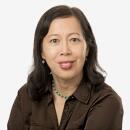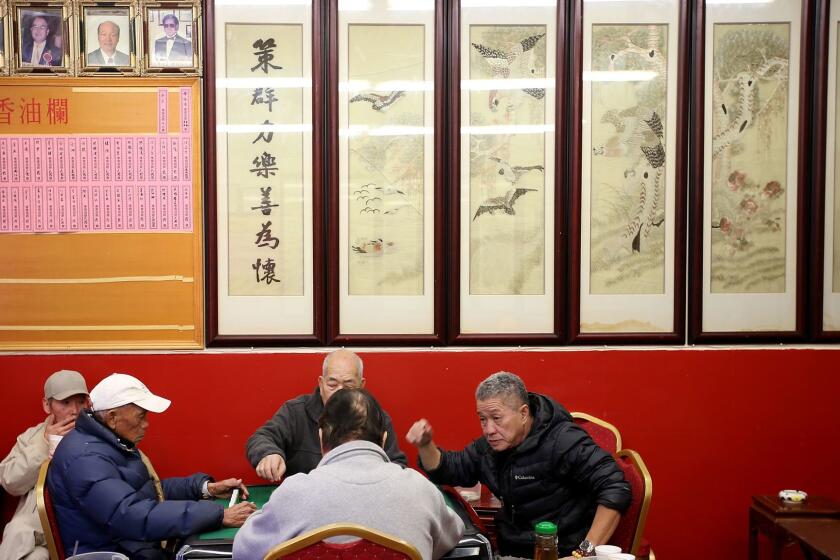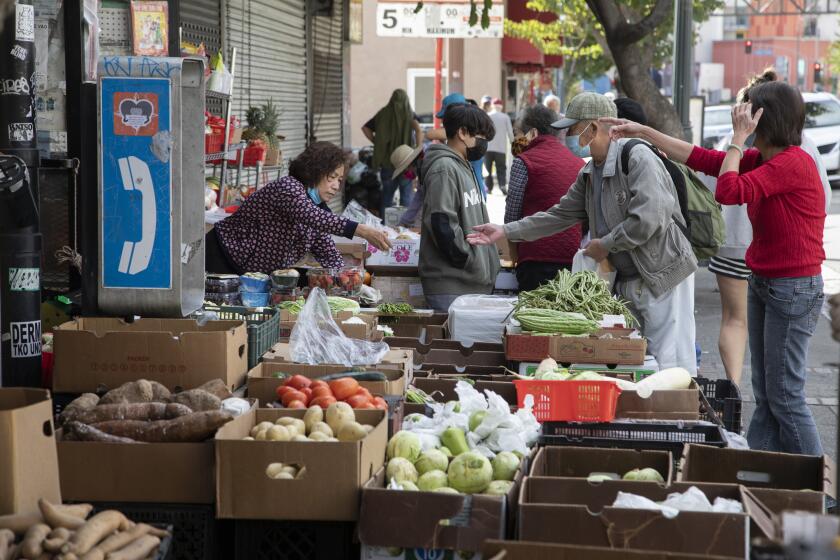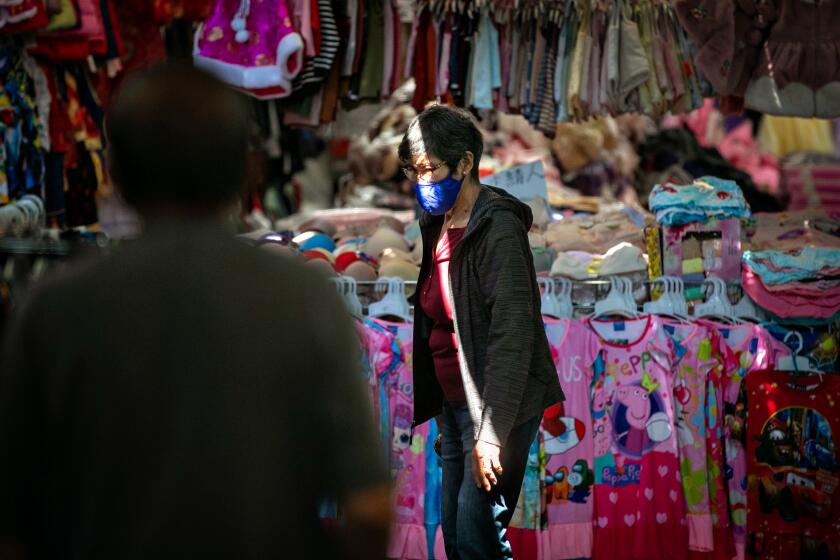Mutual aid clubs are still going strong in L.A. Chinatown. But their future is uncertain
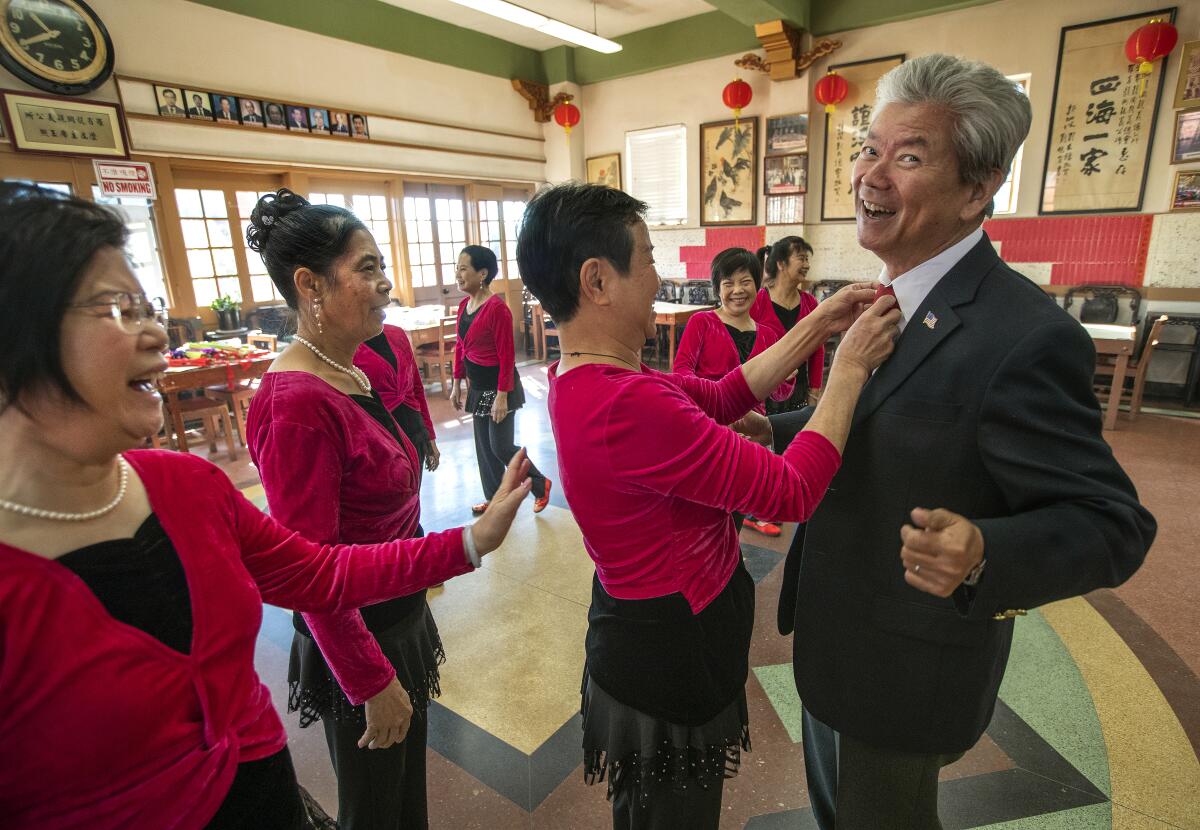
In a building with a green-tiled roof on Hill Street, most of the old men and women shuffling mah-jongg tiles and sipping jasmine tea shared a surname — Lee.
They were not blood relations, but the name, which means “plum” in Chinese, as well as their origins in China’s Guangdong, or Canton, province, bound them like siblings.
This was the scene at the Lee club, established in 1935 and known in English as the Lee On Dong Benevolent Assn., on an afternoon late last year.
Whether occupying prominent real estate in a central plaza, like Hop Sing Tong, or tucked upstairs in an alley with no English sign, clubs based on common hometowns, last names or other affiliations are scattered throughout Los Angeles Chinatown.
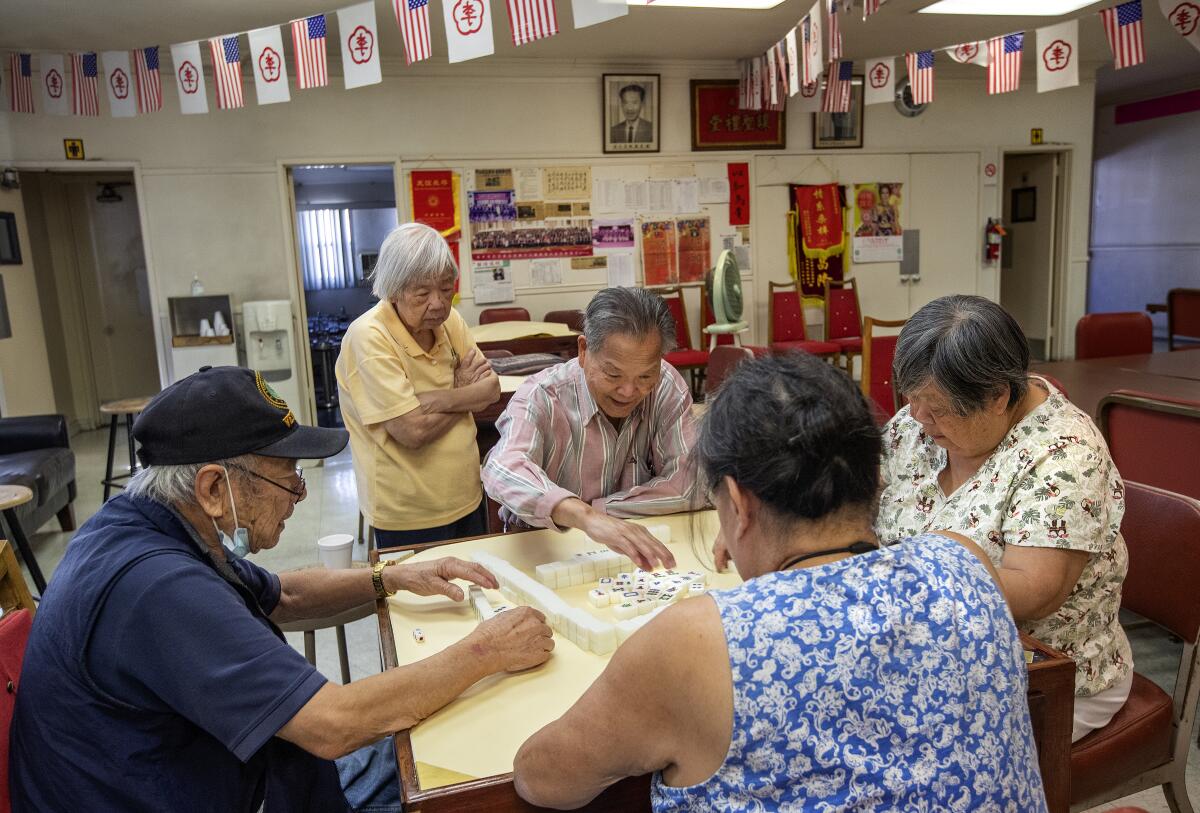
As the neighborhood gentrifies and Chinese residents grow older and fewer, the clubs — called “tong,” “gungso” or “wui” in Cantonese — remain a vital social glue.
In the 19th century, violent wars between tongs drew extensive news coverage. Six years ago, a former Wah Ching gang leader was stabbed to death inside Hop Sing Tong.
Despite their infamous history, the clubs nowadays are mostly hangouts for retirees who gather to read Chinese newspapers, chat, play mah-jongg or enjoy a meal together. Many of the clubs continue to provide the mutual aid that was a necessity back when Chinese immigrants were excluded from mainstream society, helping members in need of a loan or funeral expenses.
The Lee club has more than 400 members. But they, like those at other Chinatown clubs, worry about the future. Their children and grandchildren, who stop by Lunar New Year parties and other celebrations, see no need to join the roster.
“The perception is they don’t need social or economic help. They’re assimilated,” said Ernest Lee, 72, a retired aerospace engineer who sat at a table with three friends — all with the last name Lee. “It’s like a puzzle — how do you recruit them so our mission stays alive?”

The men, who all live in the San Gabriel Valley, spoke about the Lee club’s early days. Chinese immigrants, many from Toishan in Guangdong province, relied on the club and others like it to find rooms for rent, people to trust, seed money to open laundromats and restaurants.
Facing racism and speaking little English, they often had to take odd jobs at low wages, the Lees said of early club members.
The Lee On Dong Assn. — On Dong refers to respect for deceased people — was located on Alameda Street until the city’s old Chinatown was demolished to make way for Union Station.
Later, a new Chinatown sprung up around Hill and Broadway. In 1959, the club moved into its two-story home on Hill Street after raising more than $66,000 to buy the land.
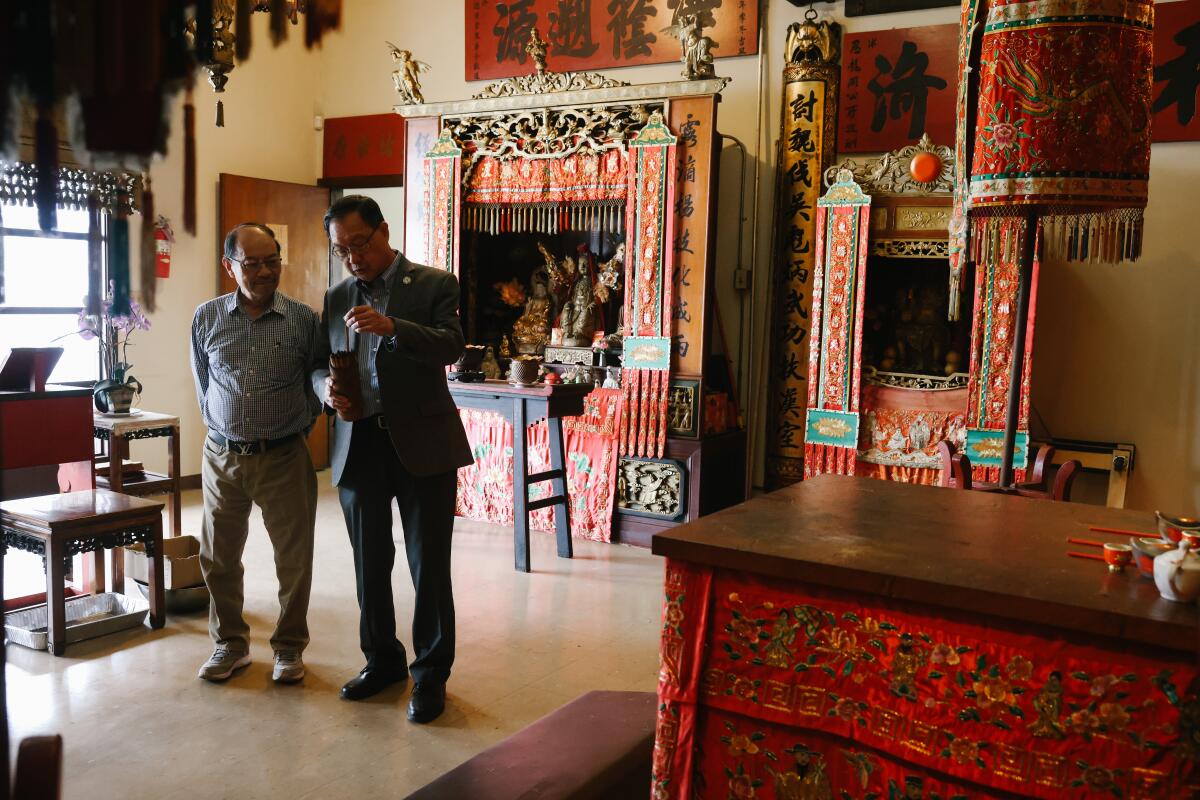
“Basically, the associations, they helped us grow up,” said Allen Lee, 83, a retired oil engineer. “They not only brought people together for support — they kept traditional culture alive while members could learn about U.S. culture.”
The other two Lees at the table had also found success in their careers. Steven Lee, 77, a former club president, is a retired entrepreneur who started a plastic bag company. Chuck Lee, 72, the current president, was a chief mechanic at a Hertz rental car operation.
Ernest, Allen, Steven and Chuck Lee, who were all born in China, like to show visitors photos of celebrations where hundreds of Lees from all over the country mingle. They have friends and relatives who have gotten small business loans through the Lee club and other associations.
One perk of the Los Angeles Lee club is a credit union offering car loans of $40,000 to $50,000. The association also includes a women’s group and offers singing lessons.
Steven Lee wants younger Chinese Americans to realize that the club is for them too.
“You need money — you qualify and you can depend on us,” he said. “We don’t want them to think that all the elders do is play mah-jongg and smoke, because they will say they don’t know how to play, and they don’t smoke.”
The 27 clubs in Chinatown are part of an umbrella organization called the Chinese Consolidated Benevolent Assn., or CCBA, which is housed in a landmark building on Broadway with a traditional curved Chinese roof.
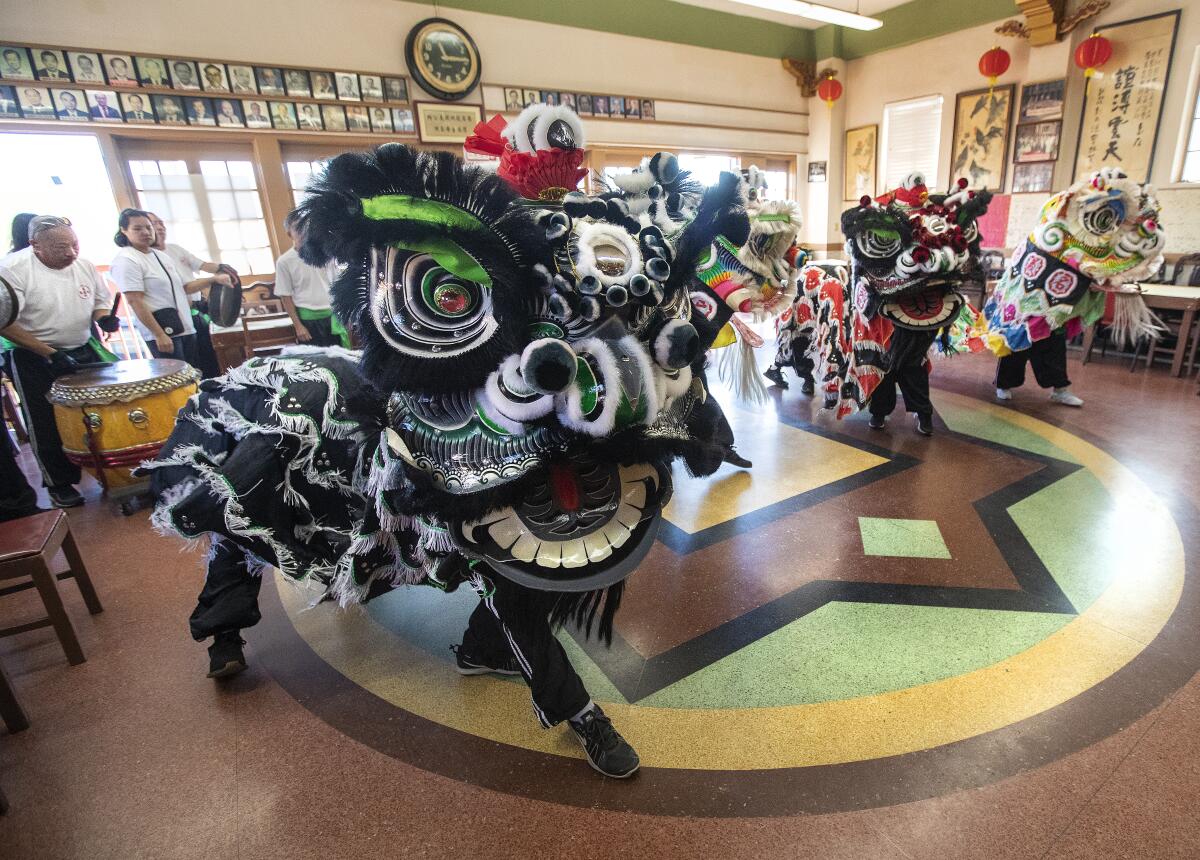
Other clubs organized around common last names include the Eng Family Benevolent Assn., the Southern California Yee Family Assn. and the Los Angeles Soo Yuen Fraternal Assn., which includes the Louie, Fong and Kwong surnames.
The Ning Kui Kong Wue and Hoy Sun Ning Yung associations are among those uniting people from common hometowns in Guangdong province.
Like Hop Sing Tong, Bing Kong Tong dates from Chinatown’s earliest days in the late 19th century and has a broad membership not based on surname or place of origin.
Similar groups have sprung up in other cities with large Chinese populations, including San Francisco, Seattle and New York.
In Los Angeles, the CCBA has long been a connection point between the clubs and mainstream society.
Some considered it the Chinese community’s City Hall, because “no one at the main City Hall wanted to be with us,” said Daisy Ma, chief government and community relations officer at the Chinatown Services Center whose husband, Derek Ma, is a past CCBA president.
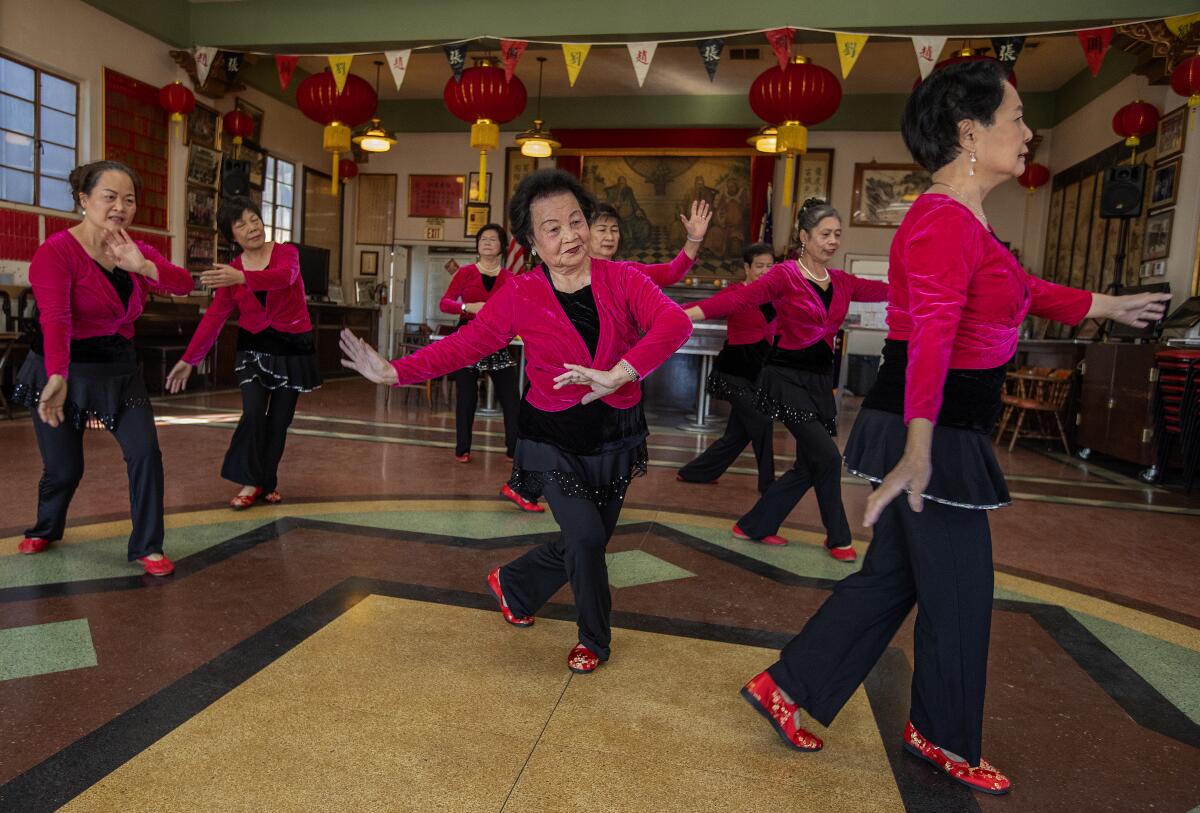
Until well into the 20th century, Chinese and other people of color were often shut out of purchasing property in certain neighborhoods.
“In effect, we were not just a City Hall, but also a courthouse, a labor department, an escrow office, a jack of all trades,” Daisy Ma said of the CCBA, where she serves as English secretary.
In the early days, because Chinese were not allowed to be buried with whites, the CCBA set up its own Chinese cemetery along 3rd Street in East L.A., where it still offers plots for sale.
Now, the Chinatown clubs also offer plots at Rose Hills Mortuary in Whittier and Forest Lawn Memorial Park in Hollywood.
Derek Ma, now 70 and the CCBA’s senior advisor, came to L.A. from Hong Kong in his late teens, juggling jobs as a garment contractor, a general contractor and restaurant owner. The associations helped him by expanding his business network. In turn, he dedicated “years of giving back.”
Just over three decades ago, he was elected the youngest president in the CCBA’s history at age 39.
But that was an exception — today, he said, the average member is around 60 years old.
During the height of the COVID-19 pandemic, when some club buildings were shut down, the CCBA rounded up members to distribute masks and hand sanitizer to senior citizens in Chinatown.
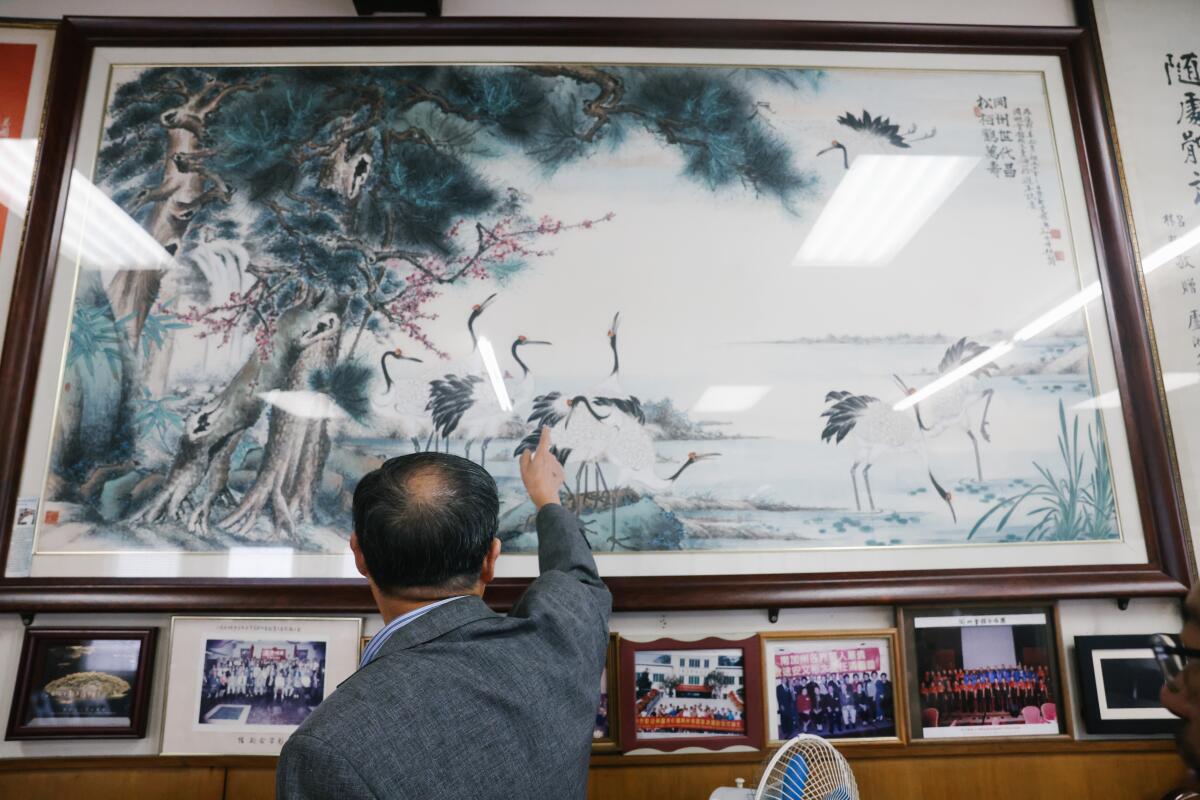
Amid a rise in anti-Asian hate, CCBA leaders hosted a meet-and-greet in Chinatown with the Los Angeles Police Department captain in charge of the area, asking for more foot patrols and bystander prevention training.
“Our elderly need to know what to do when you’re being bullied or when you see someone attacked,” Derek Ma said. “The mission of the CCBA has always been the same from its start — we keep people safe.”
On the second floor of a Chinese-style building on Broadway, Thomas Lo opened a side door to reveal the scent of incense wafting in a worship room filled with gleaming Buddhas, gold-painted rosewood pedestals and an altar brimming with joss sticks.
The Kong Chow Benevolent Assn., which counts people from Guangdong’s Xinhui and Heshan districts as members, is the only club in Chinatown with its own temple, Lo said.
Formed in 1889, Kong Chow awards scholarships from its education endowment. On occasional Tuesdays, members gather for karaoke, choir practice and dinner.
As Chinatown has become one of L.A.’s trendiest dining destinations, its elderly immigrant residents live in a food desert, struggling to buy groceries easily and affordably.
“We offer so much to people through the generations. You come to share your burdens and solve problems,” said Lo, 70. “To keep it going, we need to educate the youth on their roots so that they will learn about the greater community and its purpose.”
At the Lung Kung Tin Yee Assn., members include Danny Kwan, father of Olympic figure skating medalist Michelle Kwan, and Rep. Judy Chu (D-Monterey Park), the first Chinese American woman elected to the U.S. Congress.
Chu recalls attending association dinners with her mother, May Chu, who had struggled with isolation and loneliness as an immigrant working at a garment factory and then a cannery. Chu’s father put in long hours at a Chinese restaurant in Watts.
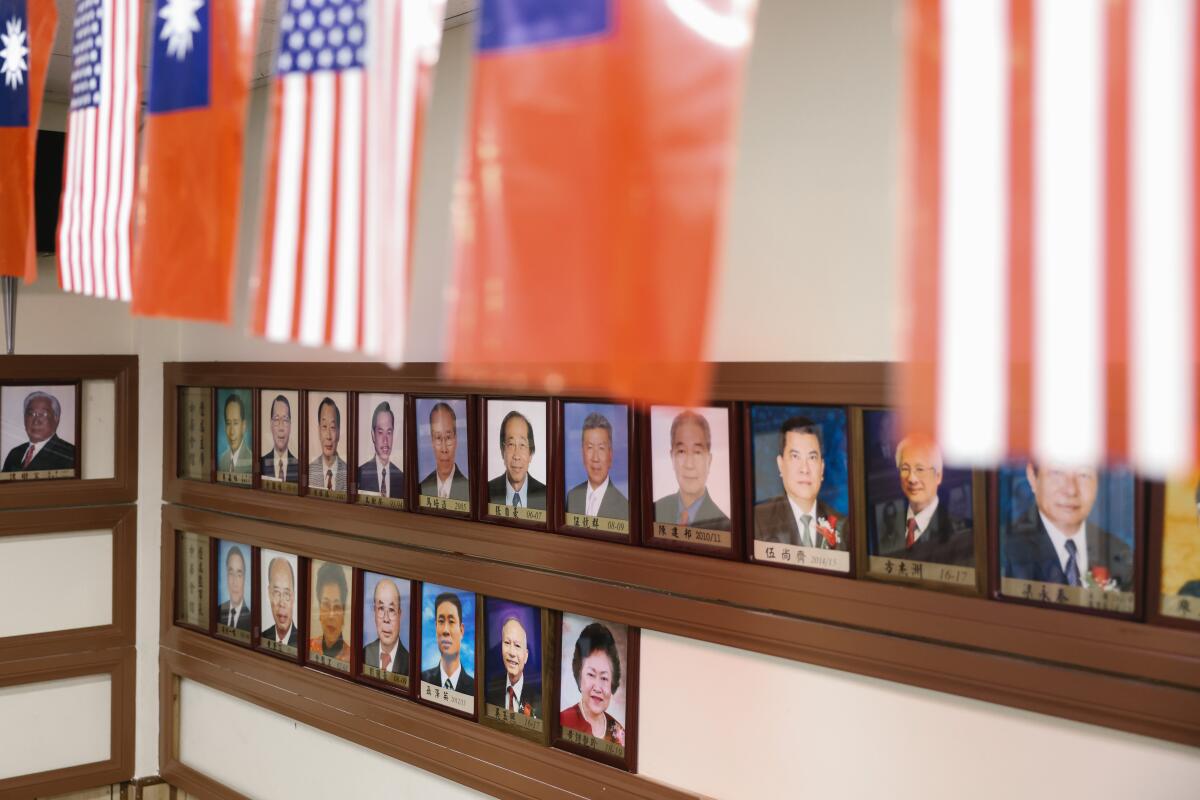
“I would sit there, seeing it as a great source of fun and camaraderie for my mom. At the start, I didn’t understand the significance of the group,” said Chu, 69. “I know now it’s the thread running through many of our lives, lifting the existence of Chinese Americans.”
When Chu ran for the Garvey school board in 1985, CCBA members spread the word to friends and family about her platform, signed up as volunteers and distributed fliers. They also opened their wallets, continuing to contribute as she ascended to the Monterey Park City Council, the State Assembly, the State Board of Equalization and then Congress.
I’ve been visiting Chinatowns everywhere I go. Many are on the decline, which points to a bigger question: How do you know when a Chinatown is gone?
The Lung Kung Tin Yee Assn., which includes the Lew, Quan, Cheong and Chew surnames, has joined forces with a lion dance group that has many younger members.
At practices at the association’s headquarters on Broadway, performers whirl around with colorful bamboo lion heads crafted in China and imported for nearly $1,000 each.
“We love our culture, and we want to focus on a beautiful aspect of the culture. Otherwise, they just come with their parents to our holiday celebration once a year,” said Paxton Chew, 70, a realtor who is the association’s president.
Patricia Chu of El Monte is one of the lion dance group’s roughly 30 active members. She said she likes the exercise and the energy.
“We’ve been dancing together for so long, it’s like having one big family,” said Chu, 30, a content acquisitions manager for a Chinese media company. “It’s something very valuable.”
More to Read
Sign up for Essential California
The most important California stories and recommendations in your inbox every morning.
You may occasionally receive promotional content from the Los Angeles Times.
